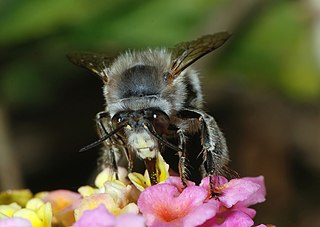
The bee genus Anthophora is one of the largest in the family Apidae, with over 450 species worldwide in 14 different subgenera. They are most abundant and diverse in the Holarctic and African biogeographic regions. All species are solitary, though many nest in large aggregations. Nearly all species make nests in the soil, either in banks or in flat ground; the larvae develop in cells with waterproof linings and do not spin cocoons. Males commonly have pale white or yellow facial markings, and/or peculiarly modified leg armature and hairs. Anthophora individuals can be distinguished from the very similar genus Amegilla by the possession of an arolium between the tarsal claws.

Anthophora ursina is a species of anthophorine bee in the family Apidae. It is found in North America.
Anthophora pacifica is a species of anthophorine bee in the family Apidae. It is found in North America.

Anthophora villosula, the Asian Shaggy Digger Bee, is a species of anthophorine bee in the family Apidae. It is presumably native to Asia but has been introduced in Maryland, where it has become established.
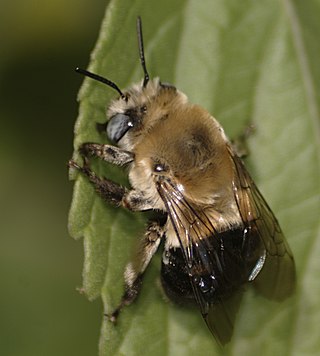
Anthophora montana is a species of anthophorine bee in the family Apidae. It is found in Central America and North America.

Anthophora californica is a species of anthophorine bee in the family Apidae. It is found in Central America and North America.
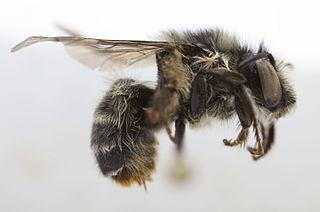
Anthophora terminalis is a species of anthophorine bee in the family Apidae. It is found in North America.
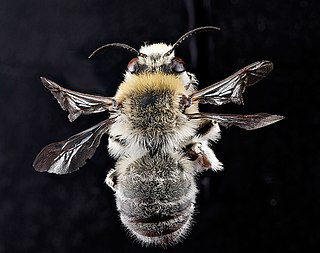
Anthophora occidentalis is a species of anthophorine bee in the family Apidae. It is found in North America.
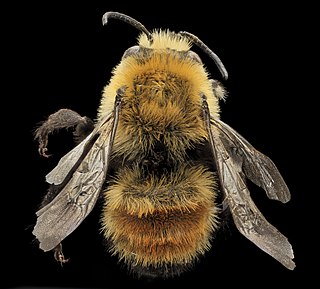
Anthophora bomboides is a species of anthophorine bee in the family Apidae. It is found in North America.
Anthophora centriformis is a species of anthophorine bee in the family Apidae. It is found in Central America and North America.

Diadasia ochracea, the ochraceous chimney bee, is a species of chimney bee in the family Apidae. It is found in Central America and North America.
Anthophorula albicans is a species of bee in the family Apidae. It is found in Central America and North America.
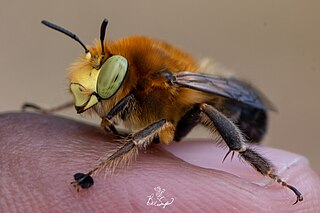
Anthophora crotchii is a species of anthophorine bee in the family Apidae named after George Robert Crotch. It is found in North America.
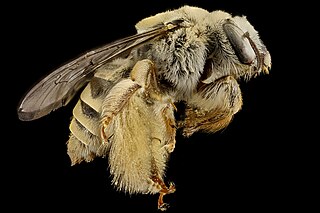
Diadasia rinconis is a species of chimney bee in the family Apidae. It is found in Central America and North America. In the Sonoran Desert, D. rinconis is considered the "cactus bee" as it feeds almost exclusively on a number of Sonoran Desert cactus species, its life cycle revolving around the flowering of the native species of cacti.
The brown-tailed miner bee is a species of miner bee in the family Andrenidae. Another common name for this species the dark-tailed andrena. It is found in North America.
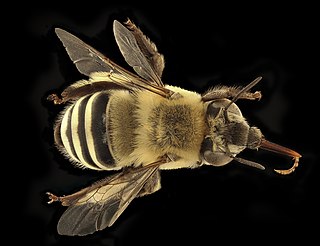
Anthophora walshii is a species of anthophorine bee in the family Apidae. It is found in North America.

Anthophora abrupta is a species of anthophorine bee in the family Apidae. It is found in North America. Females only mate once, while males can mate multiple times. This bee nests gregariously - when one female starts building a nest, others are attracted by her movements and pheromones.
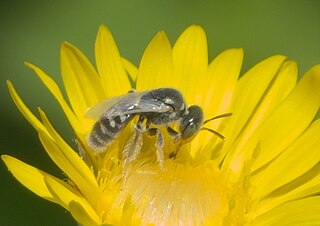
The shiny green miner bee is a species of miner bee in the family Andrenidae. Another common name for this species is the white-winged perdita. It is found in Central America and North America.

Svastra obliqua, the sunflower bee, is a species of long-horned bee in the family Apidae. It is found in Central America and North America.

The Bradley's miner bee is a species of miner bee in the family Andrenidae. Another common name for this species is Bradley's andrena. It is found in North America.
















